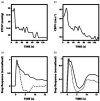Intensive care management of arterial carbon dioxide in acute intracerebral haemorrhage: Case report of influences on cerebral haemodynamics
- PMID: 36959898
- PMCID: PMC10028384
- DOI: 10.1177/1742271X20903753
Intensive care management of arterial carbon dioxide in acute intracerebral haemorrhage: Case report of influences on cerebral haemodynamics
Abstract
Intracerebral haemorrhage is relatively common and has devastating consequences. Furthermore, non-invasive and invasive strategies to manage raised intracranial pressure remain limited and associated with high morbidity and mortality. We report a case of a 72-year-old male with intracerebral haemorrhage with ventricular extension, hydrocephalus and intracranial hypertension, who was evaluated by transcranial Doppler ultrasound and optic nerve sheath diameter. This case demonstrates that beyond pharmacological and surgical interventions, simple manipulation of arterial carbon dioxide has the propensity to improve cerebral haemodynamic parameters. Our results demonstrate the negative effects of hypercapnia on cerebral autoregulation and the benefits of having transcranial Doppler ultrasound available in the intensive care unit point of care.
Keywords: Transcranial Doppler; cerebral autoregulation; optic nerve sheath diameter.
© The Author(s) 2020.
Conflict of interest statement
The author(s) declared no potential conflicts of interest with respect to the research, authorship, and/or publication of this article.
Figures




References
-
- Steiner T, Al-Shahi Salman R, Beer R, et al.. European Stroke Organisation (ESO) guidelines for the management of spontaneous intracerebral hemorrhage. Int J Stroke 2014; 9: 840–855. - PubMed
-
- Hemphill JC, Greenberg SM, Anderson CS, et al.. Guidelines for the management of spontaneous intracerebral hemorrhage: a guideline for healthcare professionals from the American Heart Association/American Stroke Association. Stroke 2015; 46: 2032–2060. - PubMed
Publication types
LinkOut - more resources
Full Text Sources
